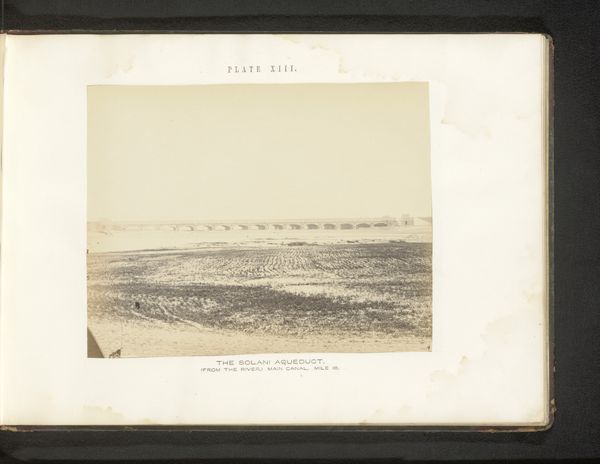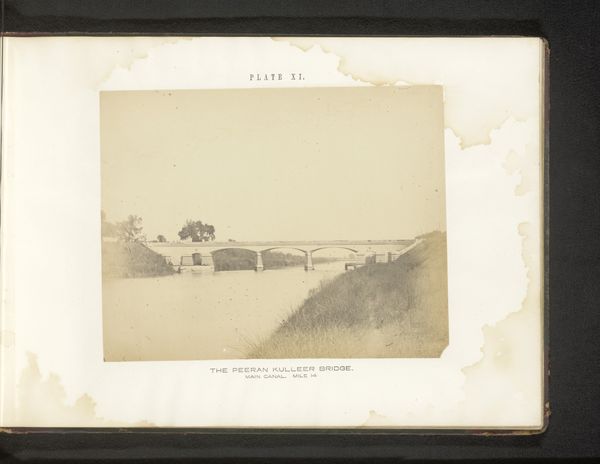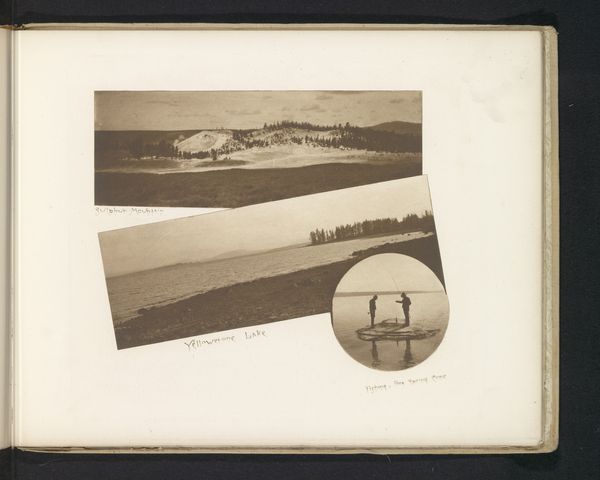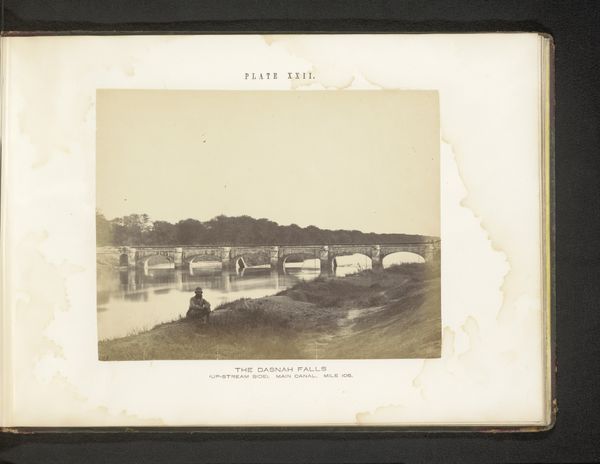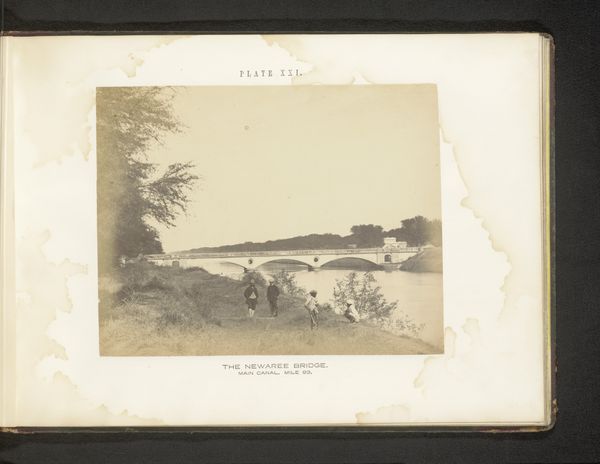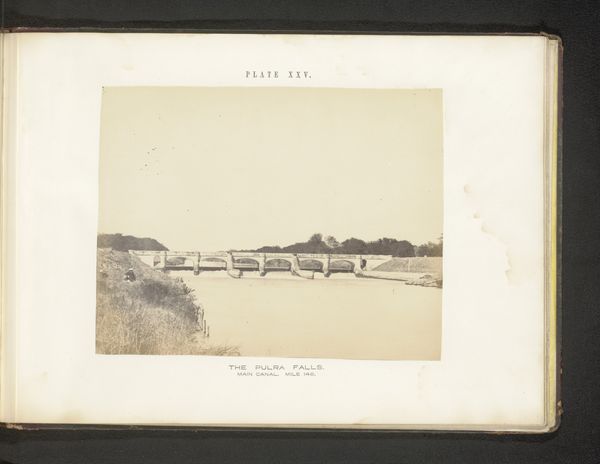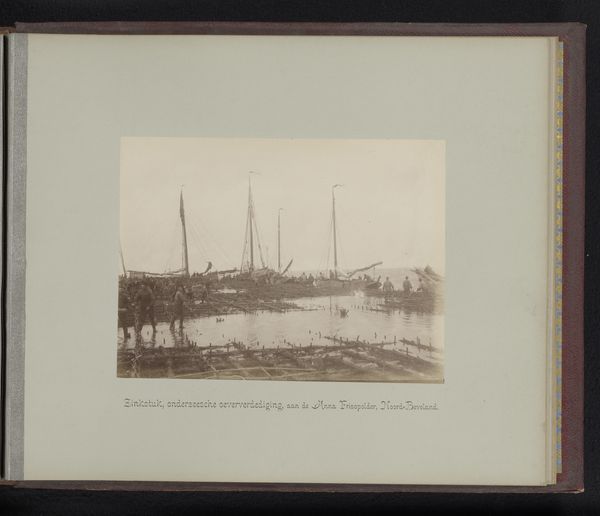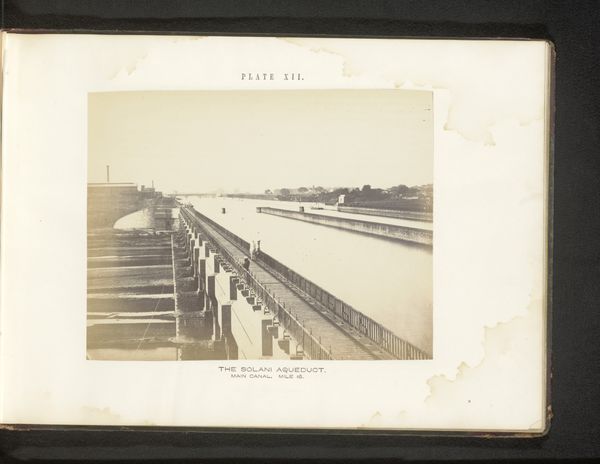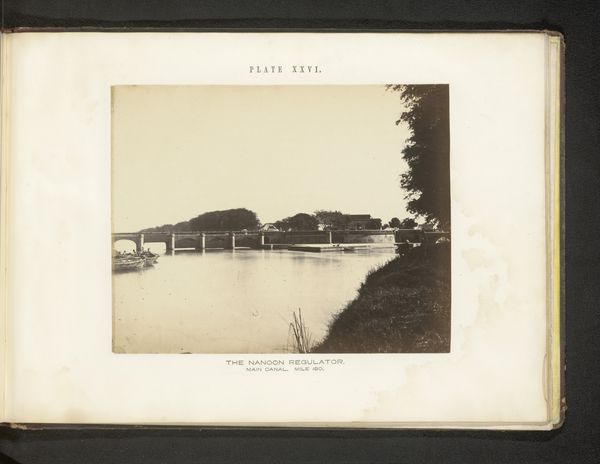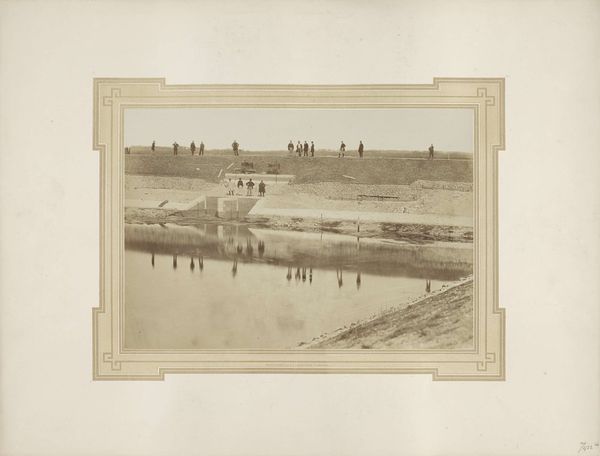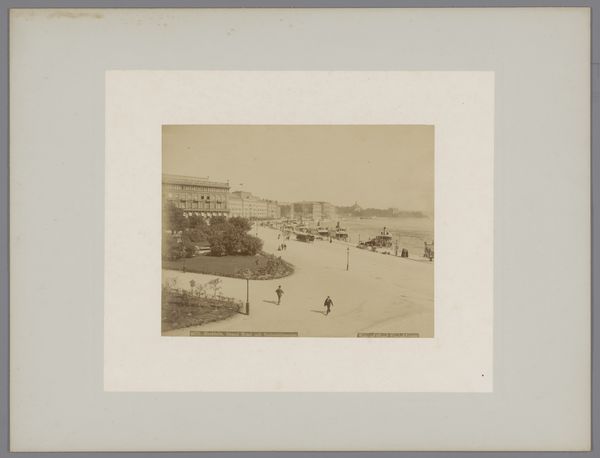
photography, albumen-print
#
landscape
#
river
#
photography
#
albumen-print
Dimensions: height 184 mm, width 233 mm
Copyright: Rijks Museum: Open Domain
Curator: Before us is "Gezicht op een brug over de Ganges bij Roorkee," a photograph captured before 1867 by Thomas George Glover. It’s an albumen print, a process popular in the mid-19th century. Editor: My first thought is how still everything is. It’s like looking at a frozen moment. The muted tones add to this feeling of stillness. And the light seems diffused, almost dreamlike. Curator: Indeed. Albumen prints offered a wide tonal range and fine detail, perfect for capturing landscapes. But let’s consider the social context: Glover was likely part of the British presence in India, documenting infrastructure projects like this bridge over the Ganges. This wasn't merely about art; it was about projecting power, showcasing engineering prowess. Editor: The bridge becomes a symbol of that, doesn't it? It cuts across the scene horizontally, dividing the river. The repetition of its arches is interesting. Note also the strong contrast created between the man with his distinct presence on the left edge and the background that vanishes in atmospheric haze, seemingly expanding toward the distant edge of the canal. Curator: Exactly. The workers needed the bridge. Its construction involved labor, materials, and colonial interests intertwined. It facilitated movement and trade, but it also represented the exploitation of resources and labor that was commonplace at the time. Think of the processes needed for that particular period to generate albumen prints using photosensitive chemicals and organic binders, and we begin to realize how that material underpinned representation during that age. Editor: Looking at the composition again, I’m struck by the layering of light. The light seems to wrap around every form. Curator: By engaging with the photograph critically, we are invited to reflect on the complex intersection between technological advances and society, and question what it represents. Editor: Indeed, contemplating this seemingly still, somewhat ethereal image through the dual lenses of form and historical materialism, certainly offers a rich understanding. Curator: It’s a convergence point where aesthetics meet political realities.
Comments
No comments
Be the first to comment and join the conversation on the ultimate creative platform.
